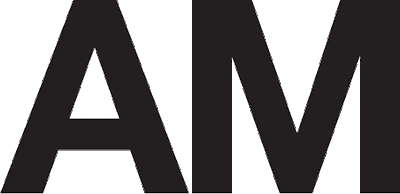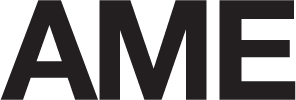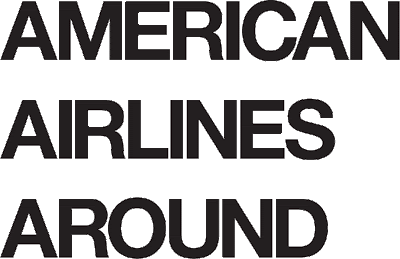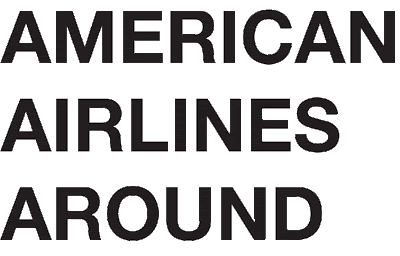Nov 25, 2010
Another ASSIGNMENTS FOR MONDAY
You have to create 3 different formats preferably with different text.
The topic, target audience, format, type, colors, layout, etc is all up to you.
But remember that there are really 3 formats for making a magazine layout:
A. picture on one page, text on the other page.
B. picute on one page and it bleeds onto the other page as well, text on the other page
C. picture on both pages, text on top of the picture.
I showed you an example of some work from a friend of mine http://tundiheinrich.com/#517075/Fashion-Magazine-Spreads
you can also look for inspiration on Priest and Grace website http://www.priestandgrace.com/#/work
more inspiration can be found on http://www.spd.org/
Another option for a new project is a PDF or all of your work along with a personal identity.
Pick whatever suits you more.
HAPPY THANKSGIVING!
Much love,
Olga
Nov 24, 2010
ASSIGNMENT FOR MONDAY
We need you to create and print a 13"x19" poster for this Monday, November 29th.
It needs to represent something you've done during this semester.
We're gonna place your posters into the display cases in the main building!
If you don't bring anything, you're not gonna be a part of the exhibit!
So please bring the best of your work!
Love,
Olga
Nov 22, 2010
The Last Newspaper (The New Museum exhibit)
Fifth, Fourth, and Third Floors
http://www.newmuseum.org/exhibitions/428/

At the turn of the twentieth century, in the dawn of the machine age, newspapers were everywhere and wire services were feeding their hunger for the latest information. In their rush to embrace the future, the Cubists discovered a rich artistic medium: the newspaper. The Surrealists followed suit, and by World War I newspapers had become an accepted material integrated with painting, collage, and graphic design. Throughout the 1950s, artists such as Robert Rauschenberg and Jasper Johns incorporated newspapers into their work not only for the iconic texture of the printed page, but also as a neural charge from the real world. By the 1960s—when this exhibition’s chronology begins—the use of the newspaper in fine art was no longer a novelty; it had become a standard source for both images and language.
The artists in this exhibition continue the exploration of the newspaper, but their focus lies in the ideological rather than the purely physical properties of the daily press. They use the newspaper as a platform to address issues of hierarchy, attribution, contextualization, and editorial bias. By disassembling and recontextualizing elements of the newspaper, such as the construction of graphics and text, the artists on view take charge of and remake the flow of information that defines our perception of the world. At its simplest, the artistic impulse that largely informs this exhibition is one of reaction and appropriation; the newspaper provides a stimulus and is itself incorporated into the final artwork.
In today’s culture, newspapers have to move as quickly as possible to compete with the increasing barrage of information on the internet. In print, it takes twenty-four hours to issue a correction. Online, credibility is rolled out in nanoseconds. People make and share the news in citizen-powered, peer-to-peer structures that can create and destroy consensus in hours. If artists were some of the first to begin to question the structure of the news, we have now reached an epoch where the public as a whole is empowered to police (and become) the press.
It is in this context that a selection of collectives and agencies has partnered in this exhibition. If the artwork assembled in the galleries is dedicated to deconstructing the power and possibilities of the press, then the invited participants are engaged in finding new (and perhaps more holistic) ways of describing the world. Four partners are in residence on the museum’s third floor inhabiting a set of flexible offices designed by Blu Dot. Latitudes, the Barcelona-based curatorial office, and a diverse team lead by Joseph Grima and Kazys Varnelis/Netlab, are on site producing weekly newspapers. The Center for Urban Pedagogy and StoryCorps are both prototyping new models for sharing and shaping discourse. Beyond these four residencies, the exhibition is animated by the Philadelphia-based Slought Foundation with kiosks, a reading room, and a discussion area spread throughout the exhibition and dedicated to a reexamination of Emmanuel Kant’s essay “Perpetual Peace.” All the partners seek to wade through tides of information in order to find new ways of making the contemporary world more legible. Their activities are an example of citizen journalism, as well as forums for the examination and structuring of something aspiring to be truth.
National Design Triennial: Why Design Now? (Cooper-Hewitt exhibit)

Underground Gallery: London Transport Posters 1920s–1940s (MoMA exhibit)

After World War I, striking modern posters began to transform the stations of London’s underground railway system into public art galleries. The posters, designed by significant artists like László Moholy-Nagy, Zero (Hans Schleger), and Abram Games, were the crucial face of a pioneering public transport campaign for coherence and efficiency that also included station architecture, train interiors, and Harry Beck’s iconic Underground map (1931–33). This installation presents over twenty posters that speak to the experience of modern London—from the promotion of culture and entertainment to the anxieties of daily life during WWII.
John Baldessari: Pure Beauty (Met exhibit)
 View images from this exhibition.
View images from this exhibition.Download the complete Audio Guide tour. (40 MB)
Learn about a special event on November 21 featuring a conversation between John Baldessari and David Salle.
Search the calendar for related events.
Visit the online Met Store to purchase the exhibition catalogue.
This is the first major U.S. exhibition in twenty years to survey the work of the legendary American artist John Baldessari, widely renowned as a pioneer of conceptual art.
Baldessari (b. 1931, National City, California) turned from an early career in painting toward photographic images that he combined with text, using the freeways, billboards, and strip malls of Southern California as his frequent sources. In his groundbreaking work of the late 1960s, he transferred snapshots of banal locales around his hometown onto photo-sensitized canvases and hired a sign painter to label them with their locations or excerpts from how-to books on photography. Throughout the whole of his career, Baldessari's sharp insights into the conventions of art production, the nature of perception, and the relationship of language to mass-media imagery are tempered by a keen sense of humor. The exhibition brings together a full range of the artist's innovative work over five decades, from his early paintings and phototext works, his combined photographs, and the irregularly shaped and over-painted works of the 1990s, to his most recent production. A selection of his videos and artist's books will also be included in the exhibition.
AIGA 50 BOOKS/50 COVERS EXHIBIT
 December 9, 2010–February 25, 2011
December 9, 2010–February 25, 2011Since 1923, AIGA’s “50 Books/50 Covers” competition has recognized excellence in book design and production. This exhibition showcases the best-designed books and book covers published in 2009, selected in the 2010 competition by a distinguished jury that included David Drummond (Salamander Hill Design, Elgin, Quebec), Paul Kepple (Headcase Design, Philadelphia), Peter Mendelsund (Alfred A. Knopf Publishers, New York), Molly Renda (North Carolina State University, Raleigh) and Tracey Shiffman (Shiffman & Kohnke, Los Angeles).
AIGA is committed to using selections from its annual competitions to demonstrate the process of design, the role of the designer, and the value of design to business, culture and society at large. Each year, the competition selections are published in AIGA’s online archives at designarchives.aiga.org, featured in an annual publication, exhibited at the AIGA National Design Center and preserved in the AIGA Design Archives at the Denver Art Museum in Colorado. In addition, selections from each year’s “50 Books/50 Covers” competition are housed in the Rare Book and Manuscript Library at Columbia University.
All selections are searchable and browsable in the AIGA Design Archives, which includes a variety of images, full credits, project statements and jurors’ comments.
Exhibition design: Triboro Design, New York
Exhibition catalogue
AIGA is publishing 50 Books/50 Covers of 2009, an exhibition catalogue featuring each of this year’s selections along with jurors’ comments. The book, designed by Triboro Design, will be available for purchase after December 8 at Blurb.com.
Blurb.com, the on-demand publishing platform, is the Presenting Sponsor of50 Books/50 Covers of 2009, and AIGA’s newest partner.
Gallery hours and location
Monday through Thursday: 11:00 a.m.–6:00 p.m.
Nov 4, 2010
A LESSON ON KERNING
Link to the original article http://chrisbeesley.blogspot.com/2009/07/lesson-in-kerning.html
If we were to take three lines of text: AMERICAN, AIRLINES, AROUND and just type it out in Helvetica bold it might look passable but our goal is to fix the spacing so that it doesn't look there are holes of white space in the words.
 Once you have the space between the first two letters established you can kern the rest of the text. This isn't a purely mathematical thing, it's visual. Each letter is unique and the amount of positive and negative space it has is different so you can't rely on using Illustrator to make sure the space is numerically even. The way you do this is by looking at three letters at a time and moving the third letter left or right until it looks like the middle letter is centered between the first and third.
Once you have the space between the first two letters established you can kern the rest of the text. This isn't a purely mathematical thing, it's visual. Each letter is unique and the amount of positive and negative space it has is different so you can't rely on using Illustrator to make sure the space is numerically even. The way you do this is by looking at three letters at a time and moving the third letter left or right until it looks like the middle letter is centered between the first and third. 
 This looks about right
This looks about right 
Consistency Commandments:
Now that we've begun to space the letters there are some guidelines that will make it easier and faster so that you don't have to rethink each pair of letters.
The space between two straights will always be the same.
For example if you have already established the space between "IB" you will know what to do later in a heading if encounter a "NM"

The space between two rounds will always be the sameIf you have already established the space between "OC" you will know what to do when you see "OG"

The space between a straight and a round will always be the same.If you have already established the space between "MO" you will know what to do when you see "HC"

Here is what you might get for a final product if you started off with the "AM" combination above

Nov 1, 2010
App Design Process
Discover> Define> Design> Develop> Deploy> Document.
Design and Development are interchangeable and should be revisited many times.
The Three most important to initial app development in this class are.
Discovery & Research:
-What are users' primary goals and how can they achieve them?
Define:
-Which information is of higher importance? How do I draw user' attention to them?
-How should I incorporate the user feedback?
Design:
-Prototyping offers a huge opportunity for increasing process efficiency?
For the next class you should prepare: A Discovery Document.
Which includes:
App Brief and Document:
- Introduction to App
- Project Goals
- Application Specifications
User Persona:
- Age, Home, Family Status, Work, Interests, Approach to the App, Wow Factor, & Apps he or she may already own.
Mood Board:
- This functions similar to the persona but is a visual representation of who the consumer is.
- Should be designed and incorporate photographic, illustrative and typographic elements.
WireFrame:
- Simple visual layout apps screens and functions.- Can be very simple, line art and boxes really.
Further Development of the Discovery Document should entail:
- Paper prototypes, sketches with cut out buttons, photographed and used to refine layout possibilities.
- Style screens, one from each level of the app showing design and function details.
- Possible additional features for further updates of the app.
- Further develop wireframe and begin to skin the app based on your style frames.
- Decent style frames can easily be turned into a motion presentation for potential investor.

